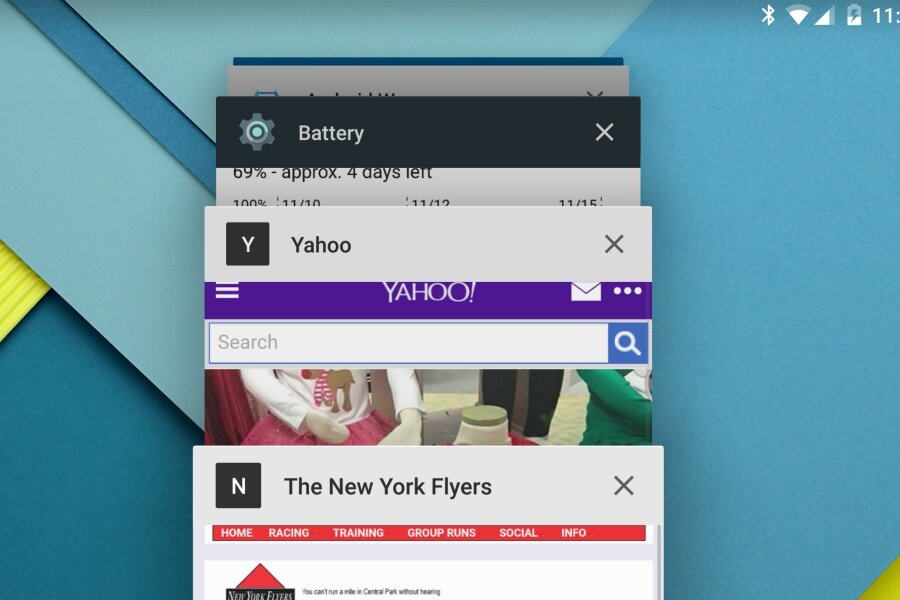What is Android's new 'Material Design'?
Loading...
Android 5.0 “Lollipop,” which Google first previewed this summer, is beginning to roll out this week to smart phones and tablets, including Nexus devices, Motorola’s Moto X and Moto G, and the LG G3. Advance copies of Lollipop have been reviewed, but now that the new operating system is about to be released onto customers’ devices, let’s take a quick look at Lollipop’s top features.
Material Design
“Material Design” is the name for Android’s new look, which relies on bright colors and white cards to give you the impression of interacting with paper on your screen. It’s the first visual redesign of Android since Ice Cream Sandwich in 2011, and it’s the biggest feature that Lollipop brings to the table. Eric Zeman at InformationWeek says Lollipop is “the best-looking version of Android yet,” praising its emphasis on white space and Google’s inclusion of thoughtful tools like a button to compose a new text message or e-mail.
Multitasking and security features
Lollipop’s “Material Design” carries over to the way the operating system handles multitasking. Apps now appear as “cards” stacked one on top of the other at the bottom of your device’s screen when the multitasking button is hit. You can scroll through them, swipe to exit one or more, and tap to pick the app you want to enter. Google also included a “Guest mode” feature, which lets you hand your device off to someone else without sharing your lock screen code or giving them full access to all your apps. Lollipop also includes “Priority mode,” which is a do-not-disturb feature that can be set to take effect for a certain amount of time. So if you’re heading into class or a meeting, you can set your phone to Priority mode and not worry about forgetting to turn notifications back on once you’re done.
Notifications
Lollipop changes the way notifications are handled by displaying them right on your device’s lock screen, and allowing you to interact with them without first unlocking the device. (If you don’t want a particular app’s notifications showing up on the lock screen, you can set it to be private.) Google has also changed the way incoming calls are displayed on the lock screen: instead of taking over the entire screen, they now appear as an alert along the top.
App improvements
Google has tweaked its Gmail app to allow it to support most third-party e-mail services, which means you can now use the app for pretty much any account you might have. There are also updates to the Play Music, Books, Movies & TV, and Newstand apps, which are now easier to navigate and, in the case of the Movies & TV app, interact more smoothly with other devices.
Early reviews of Lollipop are overwhelmingly positive -- the consensus is that the operating system is the fastest, prettiest, and least power-hungry version of Android yet. If you’ve got a carrier-branded phone or tablet, though, don’t hold your breath for the update. Over-the-air carrier updates tend to lag behind Google’s schedule, sometimes by months. Most recent handsets and tablets are eligible for the Lollipop update, and most will get it -- eventually.






